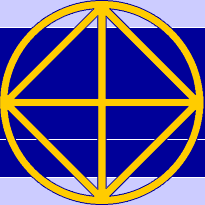Book Presentation
The Ancient Indian Thought (Overseas Messages - X)
by Dr. Ekkirala Krishnamacharya

There is a saying by Gautama Buddha to one of his disciples, "Look not as to who has said it, look to what has been said", and we believe it. We are the least bothered if the author of the books belongs to the 19th century or 15000 BC. But what we are interested is the import of the books; the ancient most thought of not only India but the world.
Dr E. Krishnamacharya (Master EK) gave many discourses during his tours to Europe which are profound and enlightening. This 10th volume of Overseas Messages, “The Ancient Indian Thought”, contains 9 lectures on various topics.
Content: The Ancient Indian Thought; Love, the Force of Life; The Etheric Body; How to Live the Spiritual Life; The Polarity of Male and Female; The Symbolism of the Triangle; Rhythm and Ritual; Teaching Methods; Education in the New Age.
Kulapathi Book Trust, Visakhapatnam, India 2020.
Sample:
The Ancient Indian ThoughtLet us try to understand the general outlines of the ancient Indian thought and if the time permits, I will go into the detail of the one or two aspects of it. The Vedic texts are only a part of original text and the original text is not found now. But from the text that is available now, we are able to understand the grandeur of the original thought and make out some of the original thoughts without putting our thoughts into it or without trying to understand it, with the spectacles of the 20th century.
As far as possible we should understand a book in terms of its own time and not in terms of our times. Many people have succeeded in doing so about the ancient scriptures of India, China and Egypt and the ancient scriptures of Chaldea, Assyria and Babylonia. But the historians differ from them but they do not count much. They are no scholars of any scripture at all. They bothered only with the dates and they are prepared to decide the dates without knowing the content.
So, we the students of spiritualism of all nations do not attach much importance to either historians or archaeologists. Let us very clearly go into the outlines of the Indian thought. There is a study according to the Vedas which is called the study of Brahma. That is, when man begins to look around himself and begins to gather impressions about outer world, tries to go into the essence of everything around himself, he goes into space and time and background of both. This background is called Brahma and the meaning of the word Brahma is expansion, expansion of consciousness. That means the whole world is filled with the same thing which is consciousness and which is expansion.
These two put together form everything in the Creation and gradually by knowing this, man begins to know all sciences and arts he is expected to know and gradually comes to himself and then he tries to know who the observer of the universe is and tries to know, who is the one that is questioning in us. Up to this stage it is called a study of Brahma, which means the Cosmos that is called the first chapter of the Vedic wisdom.
The second chapter begins with 'WHO I AM' and it is called Atma. Atma means in Sanskrit 'I AM'. A study of Atma makes us go into the construction of this constitution and it makes us understand the seven tissues of the body and the material that fills in it and the counterparts that are making it. Once again, they are understood as the vibrations of sound and light. These vibrations of sound and light are made up of the "I AM" in us. So, there are two things that are to be known by a student of spiritualism according to the Vedic thought. One is the Brahma around us; the other is the Atma, the one who wants to know. These two are called the two chapters of spiritualism.
There are two types of students; those who start with Brahma and realize in Atma and those who start with Atma and realize himself in the Brahma around himself. The first batch is called the students of Brahma or Brahmavadis. The students of the second group are called Atmavadis. The first chapter is called Brahmavidya and the second is called Atmavidya. The one forms the starting point of the other and the other forms the culmination point of the one. You can start on at any end and reach the other one. This is one of the concepts that is given in the Rigveda.
The method of teaching is unique in the ancient most Indian thought. How to make it understand is something unique, it is described in the form of a conversation between two persons; sometimes between a father and a son, sometimes between a disciple and a Master. With the one the questioning starts, and there comes the answering. The subject is dealt in the form of questions and answers.

 Circle of Good Will
Circle of Good Will Contact
Contact
